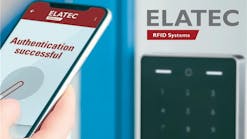The electronic access control (EAC) technology theme highlighting this month’s issue of Locksmith Ledger got me to thinking about how our coverage has evolved over the years. In the 35 years I’ve been publisher or editorial director of Locksmith Ledger, we have engaged in lively debate about what our focus should be regarding EAC and the locksmith community.
Back in the day, we argued about whether we should we stick with the basics of mechanical locks and door hardware, keys and key machines. In the early 1990s, our editor-in-chief and technology maven Gale Johnson held his cards close to the vest, having been a product of a post-war housing boom that spurred lockmakers to develop hardware that could be installed quickly and easily. It was a mechanical world, but as we moved forward with our technology coverage, Gale knew making electronics a more high-profile part of our content was essential.
As technology produced an explosion of electromechanical locks and more-advanced electronics, we shifted with the times. Electronic locks provided an efficient alternative for controlling access and eliminating “lost and misplaced keys.” Electronic locks could provide audit trail, which enabled companies to know who went where and when.
Locksmiths began to install lever handle locks and low-power operators to accommodate building codes and the Americans with Disabilities Act. Delayed-egress devices, introduced in the 1990s, started to play a role in locksmith installations after 2000, so EAC was used for commercial, industrial and institutional operations.
Electronics even migrated to safes. American Security Products (AMSEC) developed the SafeWizard, an access control system designed around a safe. The SafeWizard could control access for up to 40 users and maintain a log of the more than 8,000 entries.
EAC, once a staid and traditional technology, has become as advanced as any other device in the market. Case in point: It has been more than a decade since we ran a story about the next generation of EAC-based credentials. The lead of the article boasted, “For decades, we have carried our identities around on magnetic stripe (magstripe) and smart cards, but in today’s mobile world, we now have the opportunity to embed them on a variety of portable devices. This will enable us to use products like smartphones, USB tokens, memory sticks and microprocessor-based SmartMX cards to open doors, buy tickets and execute other secure transactions.”
That was revolutionary a decade ago. Now NFC short-range wireless technology and other wireless options embedded in our smartphones and other EAC devices virtually have eliminated the necessity for cards or tokens, while also enhancing the security at the entrance.
New EAC technology has opened more business horizons for locksmiths savvy enough to embrace the opportunities. Traditional locksmith stock and trade isn’t going anywhere in the near future, but make no mistake: Innovation in EAC and door hardware is unrelenting.





